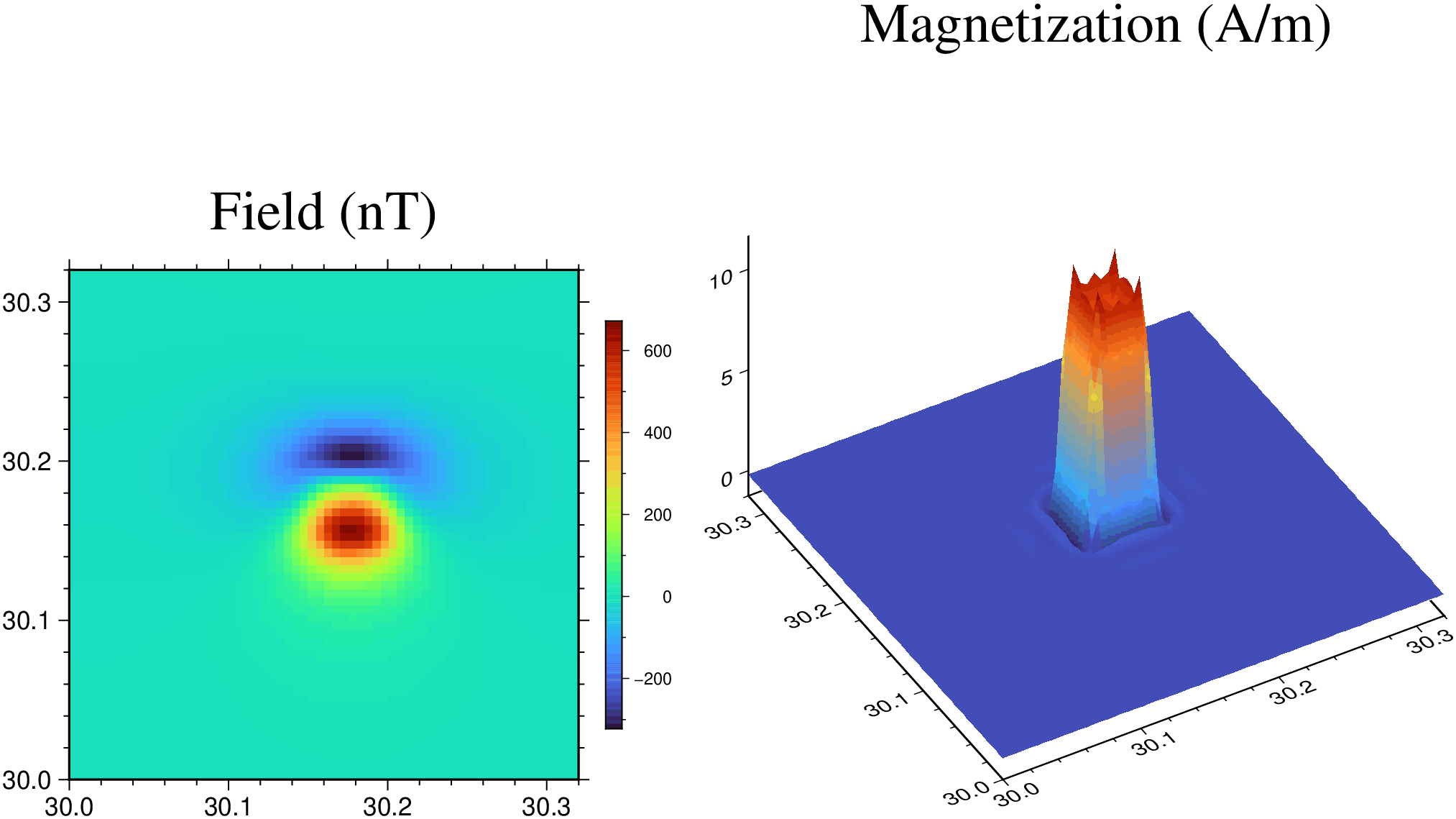parkermag
G = parkermag(mag, bat, dir::String="dir"; year=2020.0, nnx=0, nny=0, nterms=6, zobs=0.0,
wshort=0.0, wlong=0.0, slin=0.0, sdip=0.0, sdec=0.0, thickness=0.5, pct=30,
geocentric=false, padtype::String="taper", isRTP=false, verbose=false)::GMTgridCalculate the magnetic direct or inverse problem using Parker's [1973] Fourier series summation approach.
Depending on the vaule of dir it will calculate the direct or inverse problem. The direct problem calculates magnetic field given a magnetization and bathymetry. The inverse calculates magnetization from magnetic field and bathymetry.
This function is an adaptation of the Mirone code that itself was an adaptation of Maurice Tivey's code MATLAB Version from 1992.
Args
mag: GMTgrid or filename of the magnetic field (nT) for the direct problem or magnetization (A/m) for the inverse problem.bat: bathymetry grid (km positive up)dir: "dir" for direct problem or "inv" for inverse problem.
Kwargs
year: year of observation in decimal years.nnx, nny: suitable grid dimensions for FFT. By default they are calculated as the next good FFT number that is 30% larger than the size of the input grids. But this value can be set via thepctoption. To the list of the good FFT numbers run this command:gmt("grdfft -Ns")nterms: number of terms in the Parker summation (default is 6)zobs: Level of observation in km. This is zero for marine magnetics surveys.wshort: short wavelength cutoff (for the inverse problem only). By default we comput it automatically fromthe grid increments, but often it may require a finer tunning.
wlong: long wavelength cutoff (for the inverse problem only). By default it is also assigned automatically asmax(dx*nnx, dy*nny)with an additional condition of not being shorter than 150 km.slin: strike of line of observation (for the direct problem only)sdip: dip of line of observation. Usesdip=90for a geocentric dipolesdec: declination of magnetization.thickness: thickness of source layer in kmpct: percentage of grid size to augment. See also thennxandnnyoptions. Usepct=0to forcennxandnnyto be the same as the size of the input gridspadtype: Strategy used when padding an array. The default is to usetaperHanning window. Alternative iszerothat pads with zeros.isRTP: Set this to true if the field is already reduced-to-the-polegeocentric: use the geocentric dipole. Same as leavingsdip=0&sdec=0verbose: verbose mode
Returns
A GMTgrid with the computed magnetic fiels or magnetization.
Example
A synthetic example. Make a Kaba like magnetization distribution of 10 A/m, compute the magnetic field created by it and invert this field.
using GMT, FFTW
m = zeros(Float32, 64,64); m[32:40,32:40] .= 10;
h = fill(-2.0f0, 64,64);
Gm = mat2grid(m, hdr=[30., 30.32, 30., 30.32]);
Gh = mat2grid(h, hdr=[30., 30.32, 30., 30.32]);
f3d = parkermag(Gm, Gh, "dir", year=2000, thickness=1, pct=0);
m3d = parkermag(f3d, Gh, "inv", year=2000, thickness=1, pct=0);
grdimage(f3d, figsize=6, title="Field (nT)", colorbar=true)
grdview!(m3d, figsize=6, zsize=4, view=(210, 40), title="Magnetization (A/m)", cmap=:auto, surf=:image, B=:za, xshift=8, show=true)
See Also
These docs were autogenerated using GMT: v1.29.0